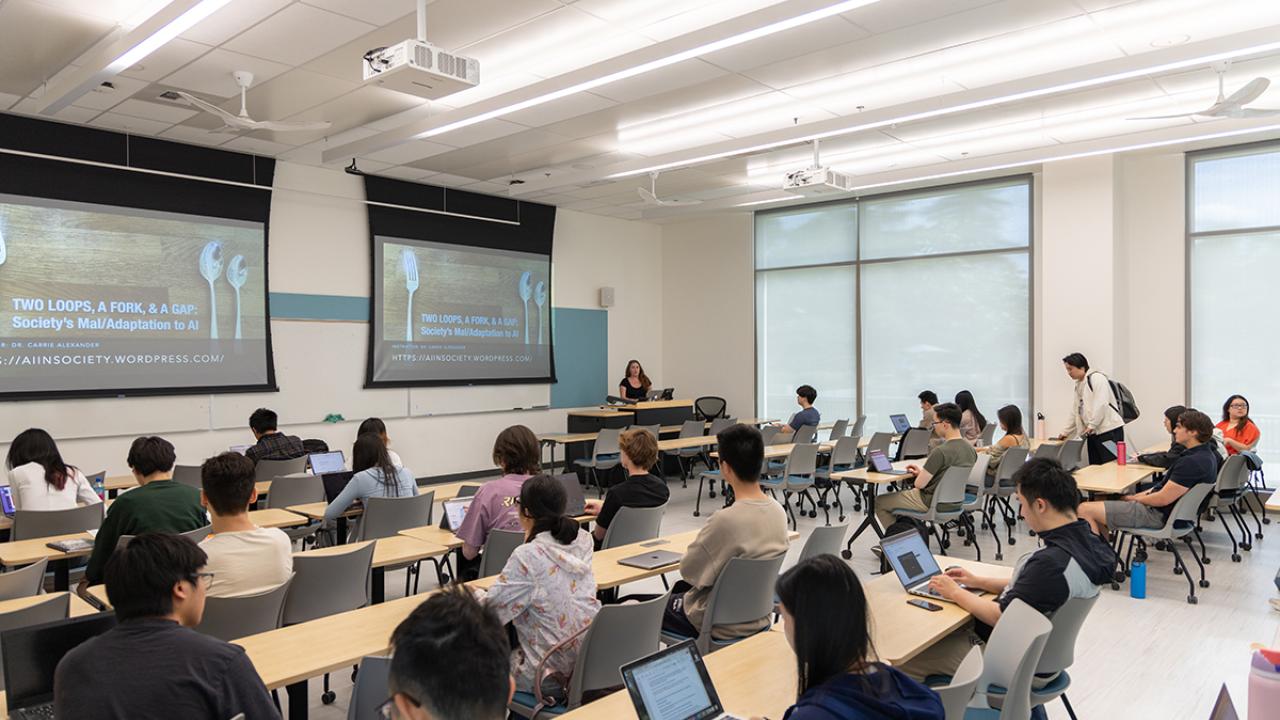
UC Davis College of Engineering Launches 2 New Courses in AI
In early May, the newly elected Pope Leo XIV identified AI as one of the most critical matters facing humanity. A recent Pew Research poll indicates that more than half of U.S. adults are concerned about AI.
To prepare students for a world where AI is swiftly becoming a dominant force, the University of California, Davis, College of Engineering has established two new AI-centered courses, "AI for All" and "AI in Health," which were both offered for the first time this spring. Integrating an AI-focused curriculum is one of the fundamental principles of the UC Davis AI Center in Engineering, which aims to arm students with the tools to become leaders in the AI space.
AI for All
With ChatGPT and other large language models having a moment in the spotlight, leaders in the Department of Computer Science saw an opportunity to become a resource for students.
"People are struggling to figure out how to maneuver in this moment," said Gabriel Simmons, a lecturer and researcher in computer science who co-teaches "AI for All" with Raissa D'Souza, professor of computer science and mechanical and aerospace engineering, associate dean of research for the college and acting director of the AI Center in Engineering.
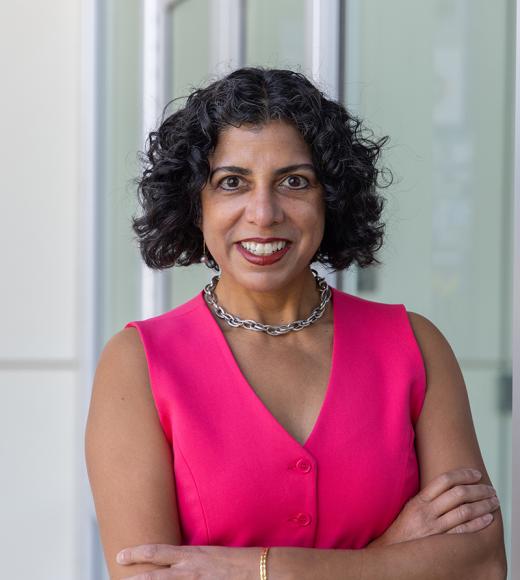
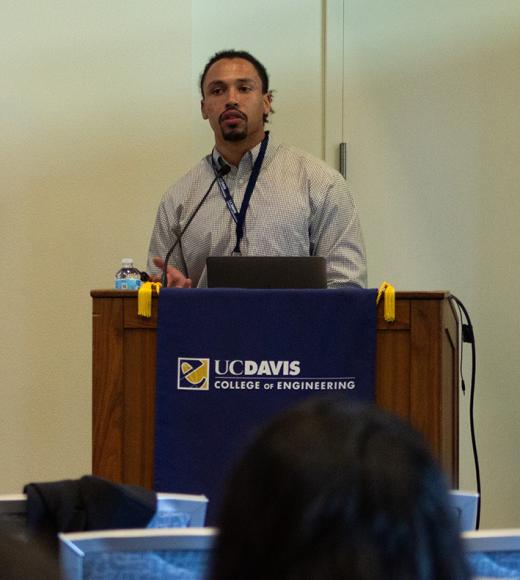
The two were involved in designing the course's curriculum along with core faculty, including Dipak Ghosal, chair of the department, and Associate Professors of Teaching Setareh Rafatirad and Chris Nitta.
Their goal is to provide students with the fundamental building blocks of AI, and cover a wide range of related topics, including its flaws, concepts, paradigms, risks, benefits, applications and ethical and societal implications. Simmons hopes students become a more informed part of the conversations around AI.
"The inside and outside view of AI are very different," he said. "The general public has misconceptions about AI that are both easy to fall into and easy to correct. I would hope that students come away with enough perspective to feel confident and qualified to have discourse about AI."
About one-third of the nearly 60 students enrolled in this initial cohort are from a computer science or statistics background. However, the course was designed to be open to all students, creating a diverse group that includes majors like economics, biology, physical sciences, philosophy, sociology, genomics and neuroscience. Additionally, several students are enrolled via UC Davis Continuing and Professional Education, the university's adult learning program.
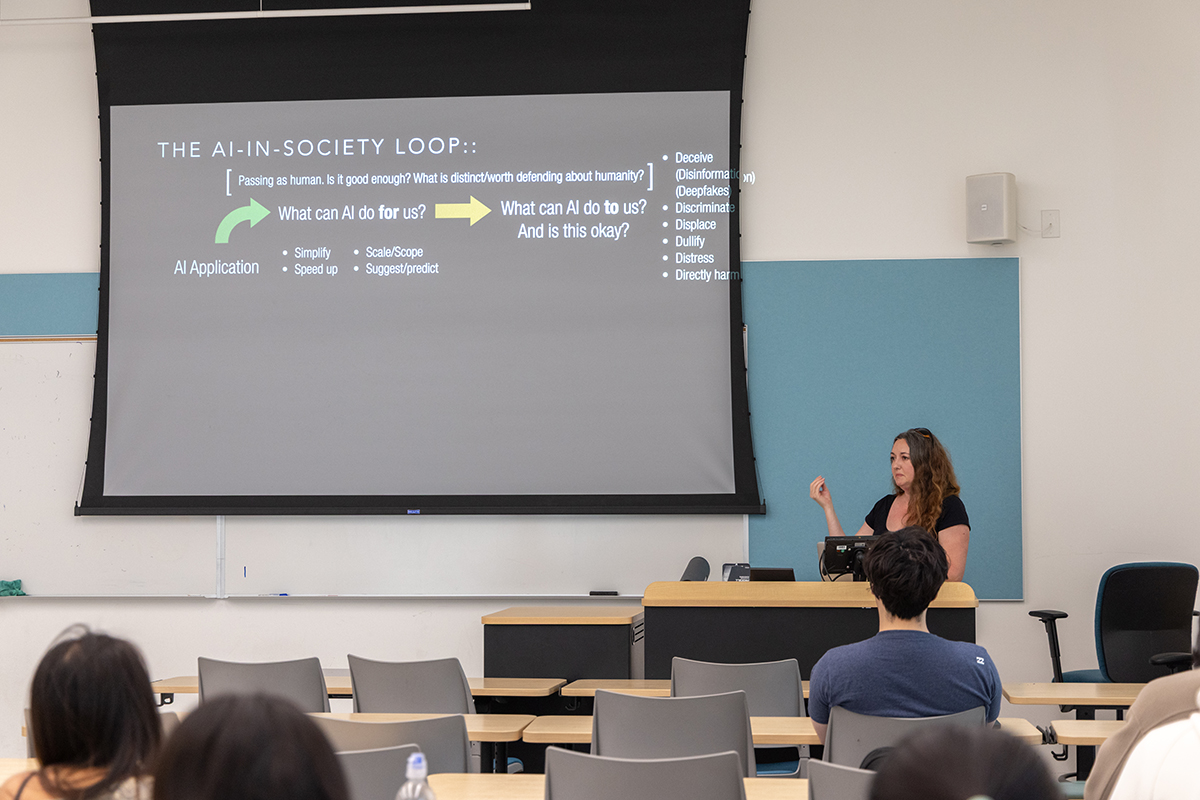
"We want to create a space where students from across campus can come together in a cross-disciplinary dialogue about AI technology and what we want the future to be," D'Souza said.
Simmons and D'Souza aim to equip the non-engineers with the foundations, assumptions and limitations of the technology so they become informed users of AI, and focus the engineering students' attention on the social, ethical and legal issues surrounding AI technologies as well as how AI is shaping the world around us — things that may escape their grasp while focusing on the technical aspects. Hopefully, this will lead to feelings of empowerment for the students to have crucial and productive conversations around the developing technology.
Having students with limited exposure to technical fields combined with students with advanced coding and math skills has provided an interesting challenge for D'Souza and Simmons.
"Keeping everybody engaged and learning requires us to have breadth and depth in our coverage of the topics," said D'Souza.
In addition to lectures given by D'Souza and Simmons on everything from the birth of AI to understanding closed box machine learning models to the importance of data, the students are also treated to guest lectures from AI researchers. Guest lecturers have included Martin Hilbert, professor of communication at UC Davis; Brandie Nonnecke, founding director of the CITRIS Policy Lab; and Carrie Alexander, a postdoctoral scholar in AI ethics and policy at UC Davis.
While D'Souza describes this first offering of the course as a bit like building the plane while flying it, the initial interest in the class reveals the need for education like this. The course has been renewed for Spring 2026, and the department aims to continue offering the course each spring, potentially upscaling it to include more students, particularly non-engineering majors. As access to AI becomes more ubiquitous, said Simmons, it's important to have as many people in the conversation as possible.
"We're at an important juncture with the technology," he said. "We have to decide how we interact with it, how it will be regulated. To get something that will be beneficial to everyone, we want as much participation as possible."
AI in Health
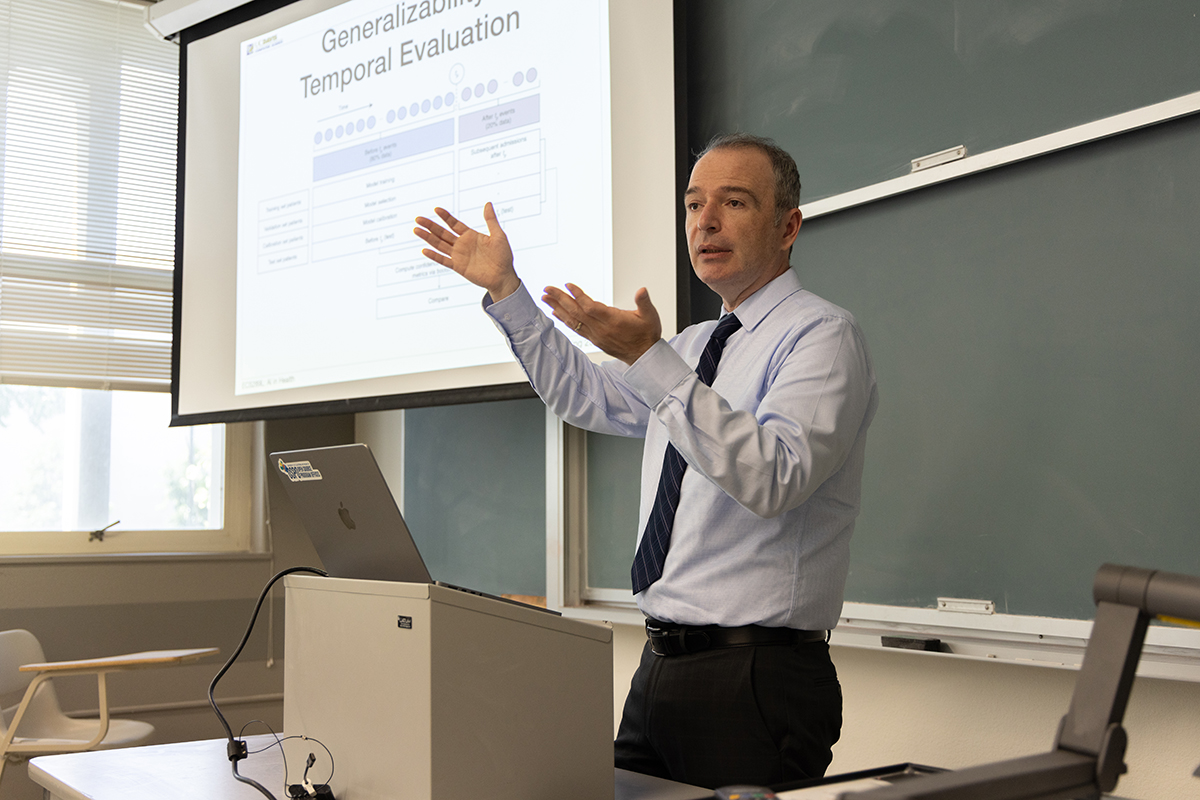
When overseeing a research group at the intersection of AI and healthcare a few years ago, Professor of Computer Science Vladimir Filkov saw the need to study the two seemingly separate subjects together to be able to bring the burgeoning technology to its maximum potential in the field.
"AI has been getting better and better over the past five years," Filkov said. "But for maximum impact, you can't study it separately and then simply apply it to health. It requires synergy in the method for the results you want it to have. And it starts with education."
Over the past year, Filkov developed a new graduate course, "AI in Health," that he has been teaching for the first time this spring. He thought the course would attract about 15 students since it is an elective, but the interest was much higher: currently, 37 graduate students are enrolled in the class. Most of the students are computer science students, but Filkov hopes in the future to welcome medical students into the class, as well.
In the class, students work in teams on real-world medical problems posed by health professionals, including clinical note analysis with large language models, feature detection in radiological images, eliminating skin-tone bias in skin lesion detection and epidemic modeling. One such problem involves a radiology issue in angiography, in which the students are attempting to use AI to identify the outline of a blood vessel in an image.

Throughout the course, the teams identify literature that helps with their problem and present their findings to the rest of the class, who give feedback. Filkov expects that by the end of the quarter, several of the 13 projects will result in publishable papers.
The course also dives into multimodal analysis and how to integrate it into health research. In this case, Filkov explains that multimodal analysis would mean combining multiple sets of data — like clinical data, blood tests, X-rays and MRIs — to better predict disease and outcomes.
"Incorporating different data sets can really benefit the students to become more creative," he said. "Instead of looking at one way to a solution, they have multiple ways of coming to a solution."
Two crucial aspects of AI in health that Filkov wants the students to consider are how to explain AI back to the doctors and under what conditions health data can be used. With AI, explainability can sometimes be challenging, but it is key to gaining doctors' trust in AI and understanding bias.
Privacy is also a major concern; health data has certain protections, so data acquisition can be a sensitive matter. Hence, the students in the class work only with de-identified data with proper permissions and take a training course for responsible research.
Filkov says he is thrilled with the enthusiasm for the class in the first quarter. In the future, he hopes to work jointly with the UC Davis School of Medicine to integrate it into a secondary curriculum, and eventually a master's program.
"Everyone knows AI in health is here to stay, and will eventually be integrated into health operations, research and education. This course can be one step to get us and our students on the map."
Paving a Path in AI Education
"AI for All" and "AI in Health" are the two newest additions to a robust list of undergraduate- and graduate-level courses across the College of Engineering that discuss or integrate AI, which can all be found on the AI Center in Engineering's new education page.
Undergraduate students can learn how AI is at the forefront of agricultural innovation in TAE 010 — "Introduction to Agricultural and Environmental Technologies," discover how to build the Internet of Things solutions in EEC 175A — "Internet of Things," or teach machines to understand images and videos in ECS 174 — "Computer Vision."
Graduate students, meanwhile, can dig deeper into AI techniques for knowledge acquisition by computers in ECS 271 — "Machine Learning and Discovery," or examine the theory and design of digital filters in EEC 201 — "Digital Signal Processing."
From examining the foundational building blocks of AI to exploring how it can be integrated into healthcare research and systems and more, these courses and the ones to come solidify the College of Engineering's position as a leader in the AI education space.
